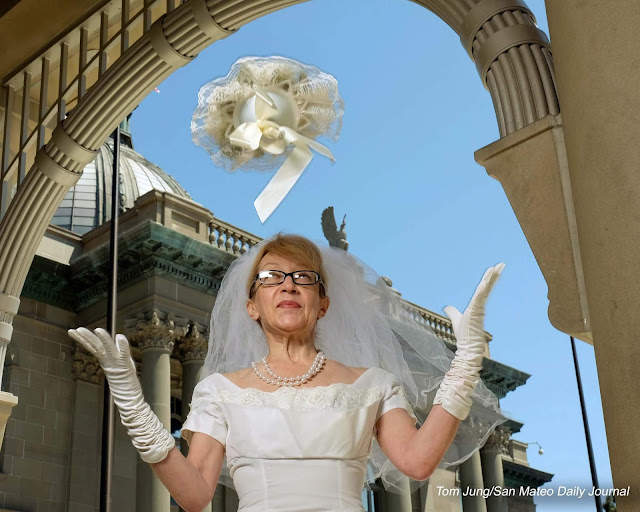 |
| 1/180th second, F 11.0, ISO 200 |
Vintage Wedding Gowns: Wedding Fashions Throughout Time was scheduled for May 18, 2018, and I was anxious to make a photo to help publicize the event. Two models would be at the Historic Courthouse for a final fitting of their gowns the week before, so I jumped at the chance to make a flash-enhanced outdoor photo at the Historic Courthouse in Redwood City.
 |
| Buy yours here. |
If you bought the AD200, you know it comes with a bare bulb adapter and flash tube. When used, it allows light to completely fill the corners of a softbox's diffusion surface, reducing hotspots and giving a more even light distribution for softer lighting. The clamping arrangement of the Glow bracket simplifies the mounting of the AD200, and just about any other flash or speedlight.
 |
| Get yours here. |
I chose my location, a covered seating area beside the square, because it allowed me to better control my flash exposure without having to deal with any direct sunlight. The image at the top of the post was the best of the bunch, and I subsequently submitted it for publication. But at the last minute, I was asked to pull the image in favor of one showing only one bride. Since we had been experimenting with a bouquet toss photo, I was able to submit this image instead.
 |
| 1/180th second, F 9.0, ISO 200 |
Glare Spots: Softboxes provide a broader light source resulting in a gentler transition from highlight to shadow. I might add that this is not the same as lowered contrast, since that is the result of light bouncing off reflective surfaces such as the wedding dress or bare skin. Softboxes also create huge glare spots on glasses, as you can see here. This photo was not submitted because of the glare, and serves as a reminder that when shooting from a low position, the height of your light source could cause some trouble.
Here's the final image, as it appeared in the May 15, 2019 edition. Again, the exposure proper balance between the shadows and the highlights give both saturation and detail to the entire image, with no inky shadows or blocked highlights.


No comments:
Post a Comment